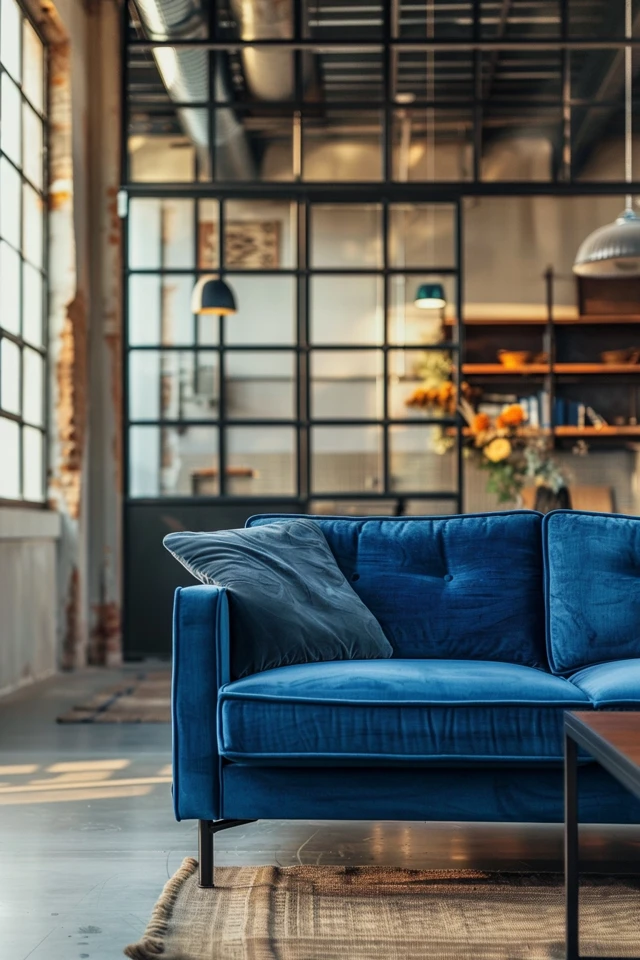Industrial interior design is a captivating style that combines raw materials, neutral color palettes, and visible structural elements to create a modern and sleek aesthetic. Over the years, this design trend has evolved from its origins in factories and warehouses to becoming a popular choice for homes, offices, and other commercial spaces.
When incorporating industrial interior design into your space, it’s essential to understand the defining elements and decor choices that contribute to its unique charm. By embracing these elements and following some expert tips, you can create a stylish industrial-inspired environment that reflects your personal taste and enhances the overall ambiance of your space.
Key Takeaways:
- Industrial interior design is a versatile style that has evolved over time.
- Key elements include raw materials, exposed structural elements, and neutral color palettes.
- Industrial design is not limited to literal objects like gears and uncovered light bulbs.
- Incorporate modern approaches and minimalist spirits to create a sophisticated industrial look.
- Remember to emphasize natural light, large spaces, and structural elements when designing your industrial-inspired space.
Now that we have explored the concept of industrial interior design, let’s delve deeper into the defining elements that make this design style truly unique.
Defining Elements of Industrial Interior Design
Industrial interior design captures the essence of rawness and simplicity, creating spaces that are both functional and visually striking. It is characterized by a combination of design elements that work together to create its distinctive aesthetic.
Exposed Brick Walls
One of the key features of industrial interior design is the use of exposed brick walls. These walls add texture, warmth, and an undeniable charm to the space. They serve as a reminder of the building’s history and create a sense of authenticity.

Concrete Floors
Concrete floors are another hallmark of industrial interior design. They provide a solid foundation and serve as a blank canvas for other design elements to shine. The natural gray tone of concrete complements the neutral color palette often seen in industrial spaces.
Neutral Color Palette
The color palette in industrial interiors is typically neutral, with a focus on darker tones such as blacks, grays, and whites. This creates a calm and serene atmosphere, allowing other design elements to take center stage.
Raw Materials
Industrial interior design incorporates an array of raw materials like leather, wood, and metal. These materials add texture and depth to the space, creating a visually interesting and tactile experience.
Steel Accents
Steel is a common material used in industrial interior design, both structurally and decoratively. Steel accents, such as light fixtures, furniture legs, or exposed beams, bring an industrial edge to the space.
High Ceilings and Large Windows
Industrial spaces often feature high ceilings and large windows, allowing abundant natural light to fill the room. These architectural elements create an open and airy atmosphere, enhancing the overall appeal of the design.
Minimalist Spirit
Industrial interior design embodies a minimalist spirit. It emphasizes simplicity and functionality, avoiding excessive ornamentation or unnecessary clutter. With clean lines and a stripped-down aesthetic, every element within the space serves a purpose.

“Industrial interior design showcases the beauty in imperfections. It celebrates the rawness of materials, the honesty of construction, and the simplicity of design.”
By incorporating these defining elements of industrial interior design, you can create a space that exudes an urban and edgy vibe while still maintaining a sense of comfort and functionality.
Bringing Industrial Design Into Your Home
To incorporate industrial interior design into your home, I suggest starting with the lighting. Pay special attention to rooms with abundant natural light, as it enhances the industrial style’s allure. Industrial design is most captivating in large, high-ceiling areas, so make the most of spacious rooms in your home.
Maintain timeless design elements that are the hallmark of industrial interiors, such as large windows that allow plenty of natural light to flood the space. Opt for rough textures and clean lines to accentuate the raw and authentic feeling of the design. When selecting furniture and decor items, choose dark neutral tones that complement the industrial aesthetic.
Emphasize the structural elements of your home, such as exposed beams, brick walls, and concrete floors. These elements add character and depth to your space while staying true to the industrial design style. In smaller areas, you can still capture the essence of industrial design by incorporating one or two grand gestures, such as exposed raw construction elements. Keep decorations minimal to maintain the spirit of simplicity and minimalism that defines this style.


